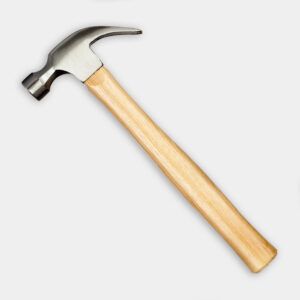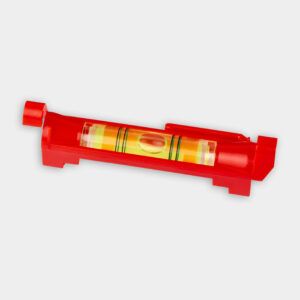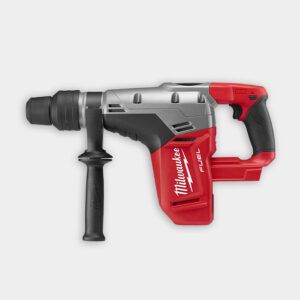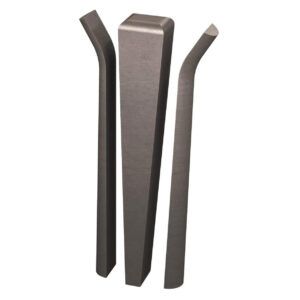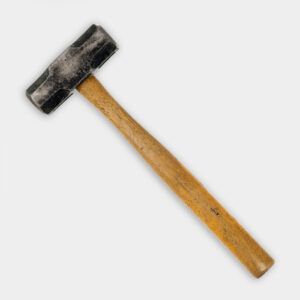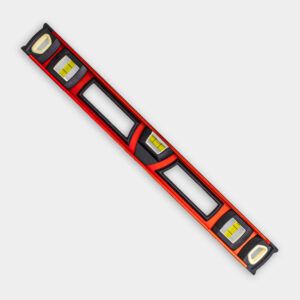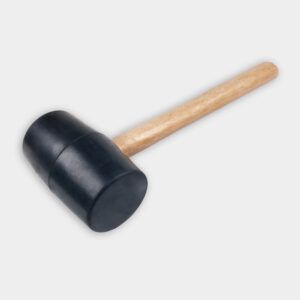Project details
Skill
Cost
Estimated Time
A long-lasting patio is a lot like a smooth paint job—it’s all about the prep work. Rush to put pavers down on a faulty base, and it might take only a few seasons for the stones to shift and become a tripping hazard. Walpole, Massachusetts, homeowner Michael Kelleher, along with landscape designer Jennifer Nawada and landscape contractor A. Bonadio & Sons, focused most of the project time for the 18-by-18-foot patio on creating a rock-solid foundation.
Building a Fire Pit Patio: An Overview
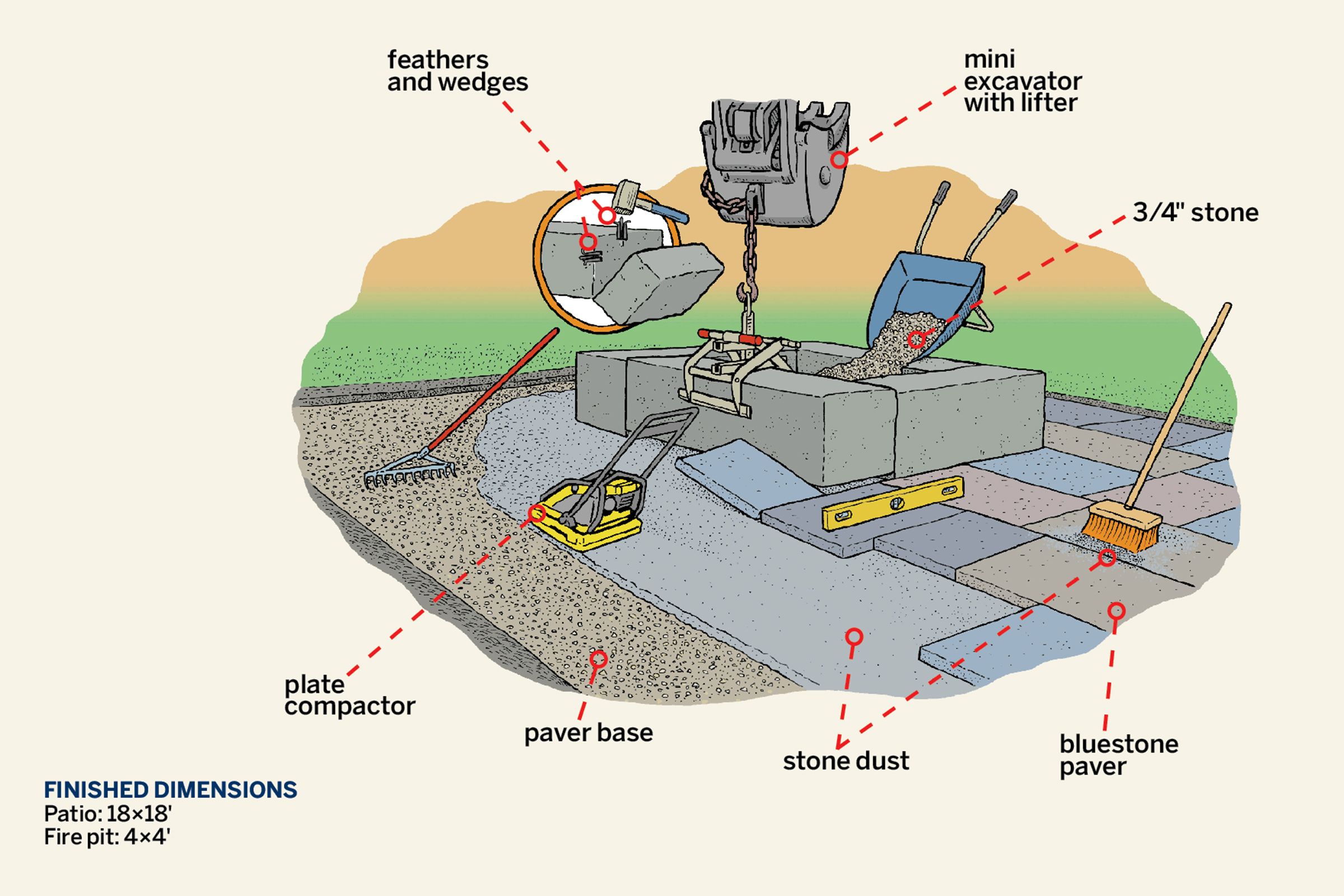
The built-in fire pit, made from massive salvaged blocks of granite, anchors the patio design and keeps the festivities going after the sun goes down. Follow along as they show you how to construct a bluestone patio around a centerpiece fire pit from excavated base to barbecue-ready.
The Timeline
SATURDAY: Prep the base and install the fire pit (Steps 1-9).
SUNDAY: Lay the bluestone pavers (Steps 10-16).
Steps for Building a Fire Pit Patio
Step 1: Build the base
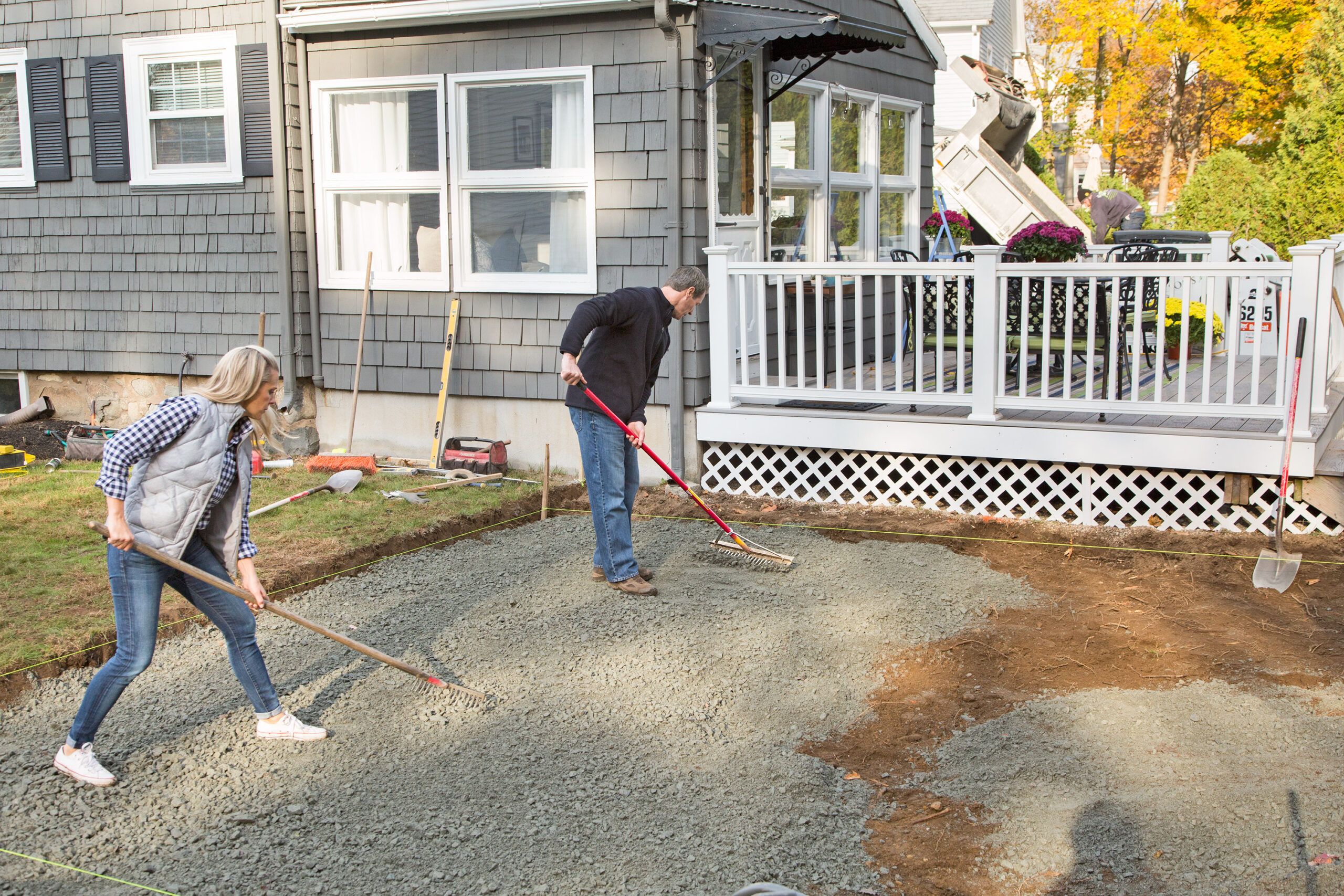
String a mason line to a pair of stakes about a foot beyond the final patio size. Add three more perimeter string lines to complete the patio outline, squaring each using the 3-4-5-foot rule.
Use a line level to slope the strings inch per foot, so water will run off the patio and away from the house. Make an X with two more strings diagonally between corners. You’ll use all these lines to measure the height of the base as you build, removing and replacing them as needed.
Now dig up the topsoil layer, about 8 to 12 inches, then tamp the subsoil with a plate compactor. Finally, spread a 3-inch-thick layer of paver base and rake it level.
Step 2: Compact it

Dampen the paver base with a garden hose to keep down the dust, and run the plate compactor over the surface. Add a second layer of paver base, rake it level, moisten it, then compact again. Repeat with 3-inch layers until the foundation is 2 inches below the mason line.
Step 3: Drill holes
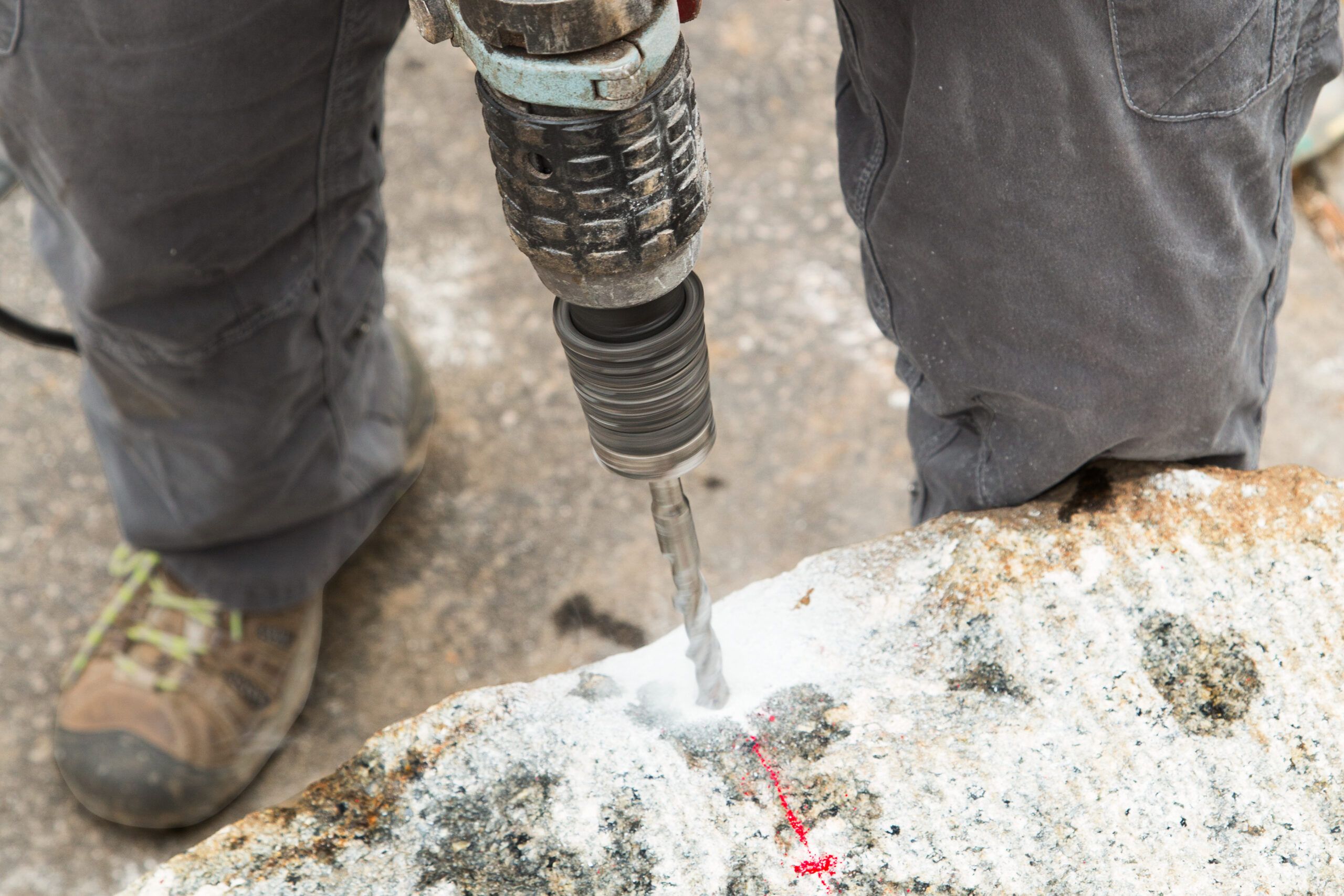
Determine the location of the fire pit—ours is centered in the patio and parallel to the nearby deck. Use the paint to mark the outside perimeter of the finished fire pit on the compacted base.
Stretch a mason line across the patio base, tied off to stakes beyond the perimeter lines, then square it to a perimeter string. This represents the outside face of one of the fire pit walls, and you’ll use it later to square the pavers.
To trim the granite to length (ours are 13×36 inches), start by drawing a cut line with a wax pencil along three sides of the stone. Chuck a ½-inch masonry bit into a rotary hammer, then put on hearing, eye, and lung protection.
Drill a series of holes 3 inches deep and about 3 to 4 inches apart along the cut line. Spray the bit with water to keep down the dust.
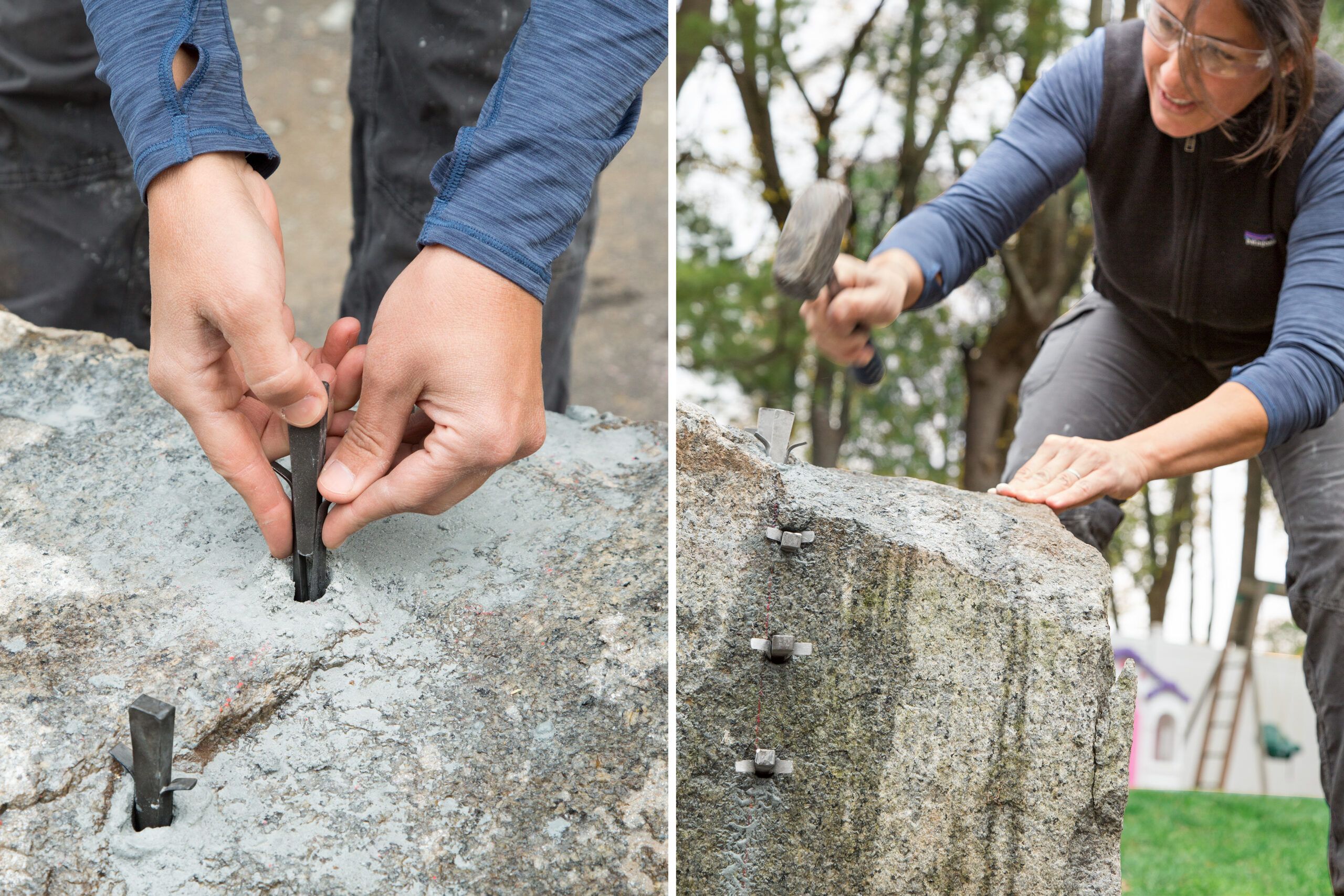
Step 4: Add splitters
Set a pair of curved steel feathers and a wedge into each opening. Fit the wedge between the feathers, which should curve out and away from each other. Tap each wedge lightly with a 3-pound sledgehammer until it fits snugly.
Step 5: Strike the steel
Using the sledgehammer and working sequentially, hit each wedge a little at a time until the rock splits along the cut line.
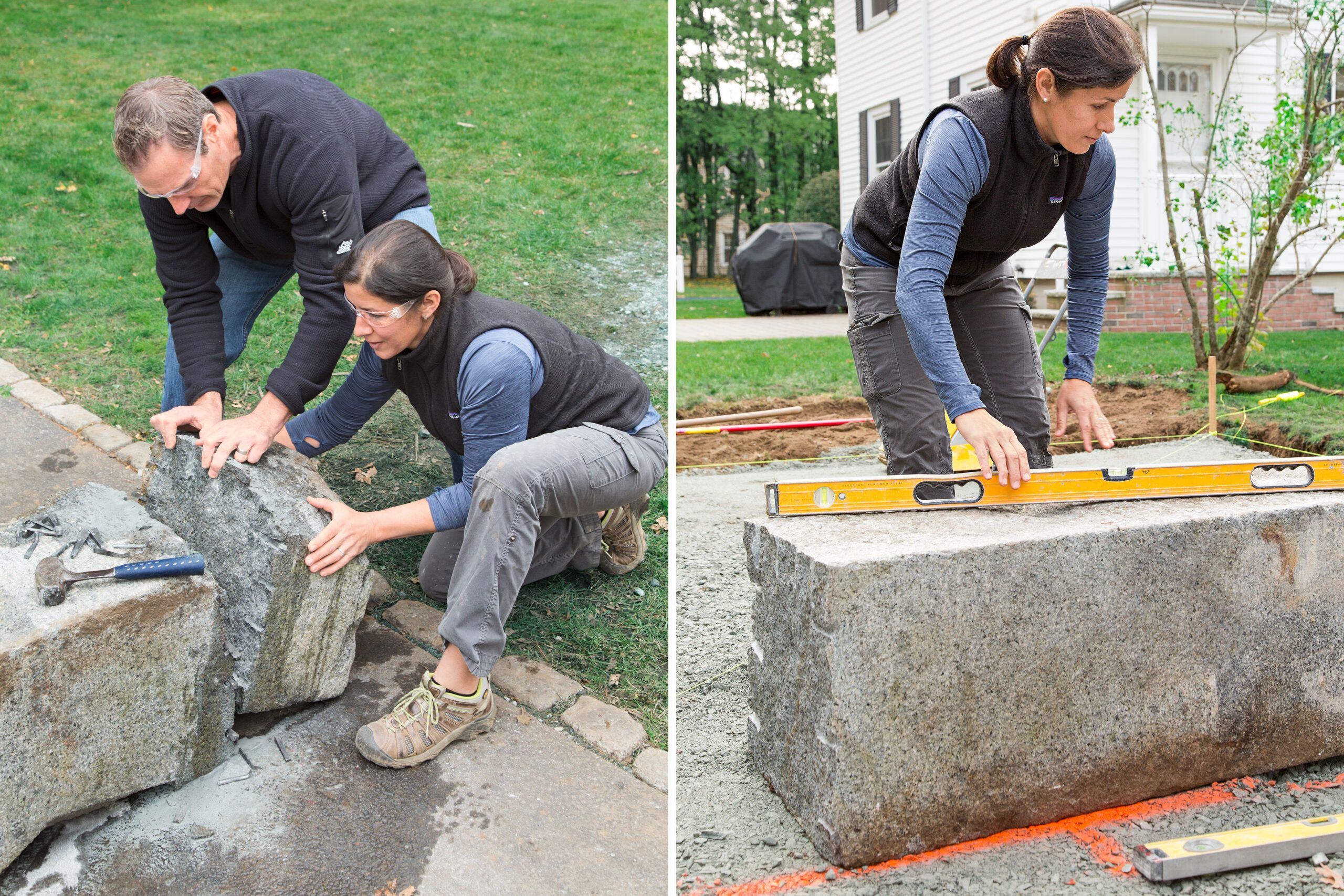
Step 6: Reveal the new face
Once the rock cracks, pull the feathers and wedges out and pry away the waste, exposing the new split face.
Step 7: Set the first stone
Use a mini excavator fitted with a lifter attachment to guide the first section of granite into place, or hire a landscape contractor to help.
As the operator lowers the stone, use a digging bar to guide it into alignment along the paint markings made earlier. Set the stone in place and check for level, as shown. If the granite is out of level, lift the stone, and shovel some paver base to the low spots underneath and reset the stone.
Tip: To save time, ask if the stone yard can cut the granite blocks to size and set them in place on the base.
Step 8: Finish the fire pit
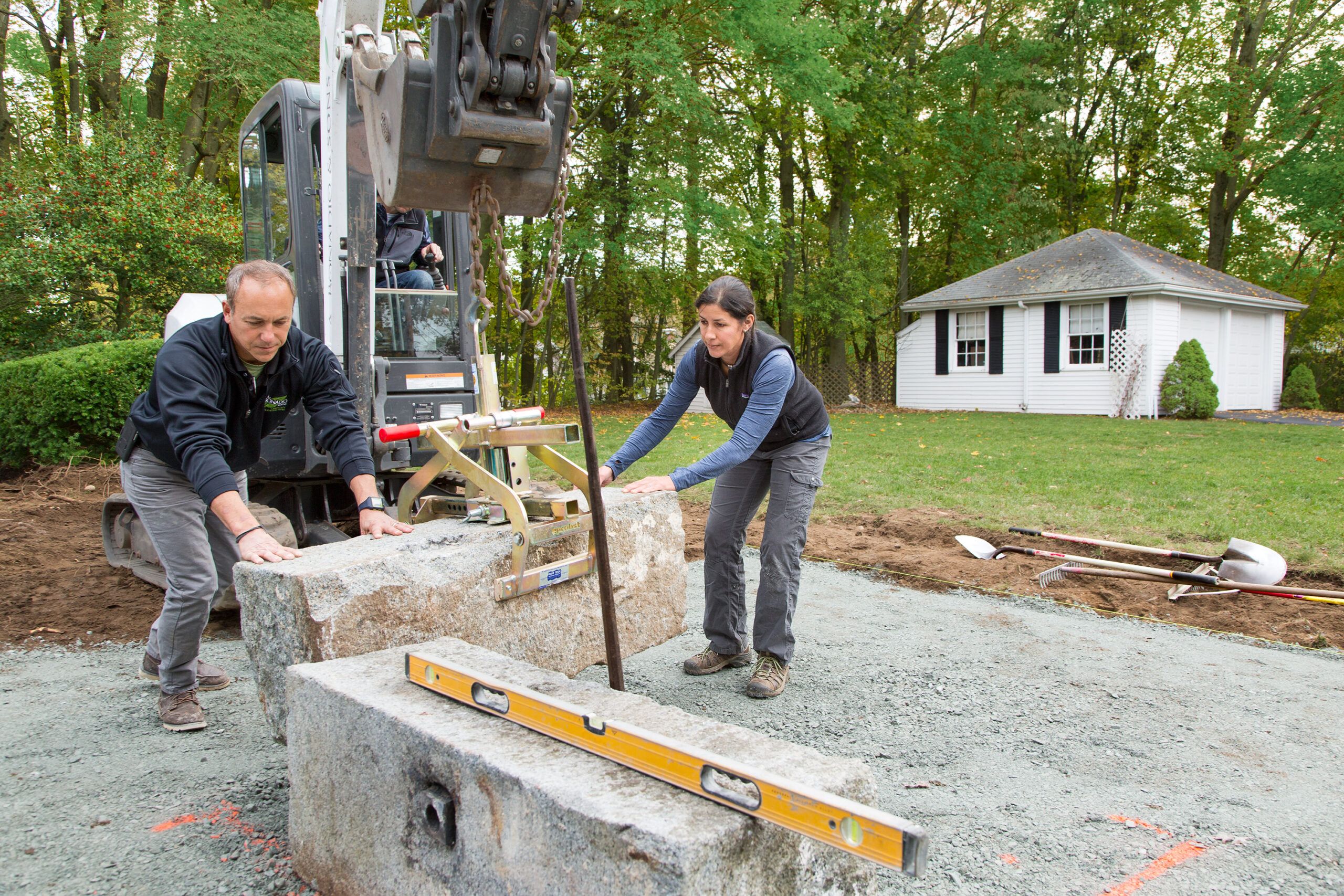
Set the second piece of granite so it butts up to the end of the first one, making a corner. Check it for level, then repeat the process for the remaining granite pieces.
Step 9: Add drainage
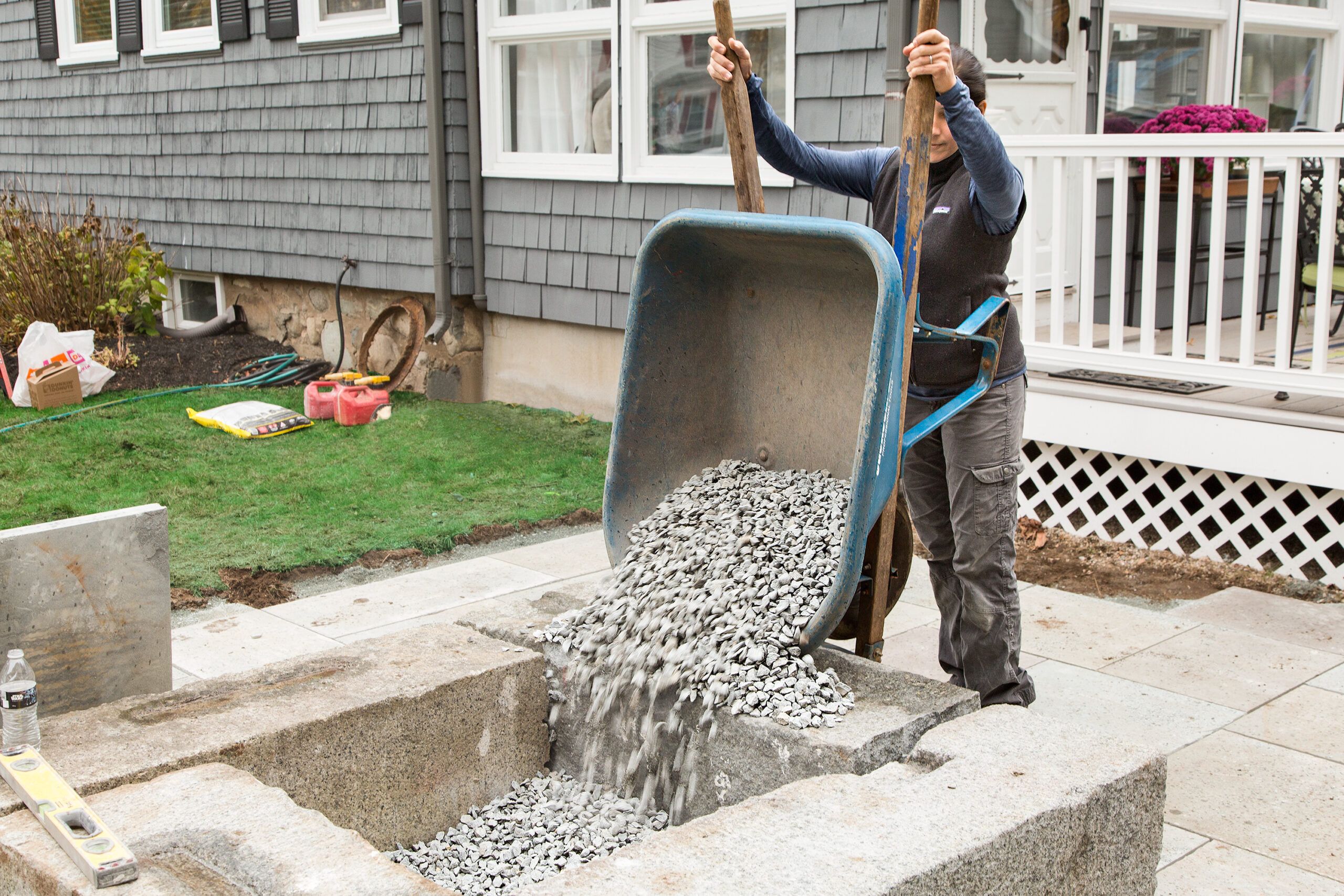
Dump a 2- to 3-inch-deep layer of 3⁄4-inch crushed stone into the pit and rake it level. This stone will help the fire pit to drain after a rain.
Step 10: Set bluestone height
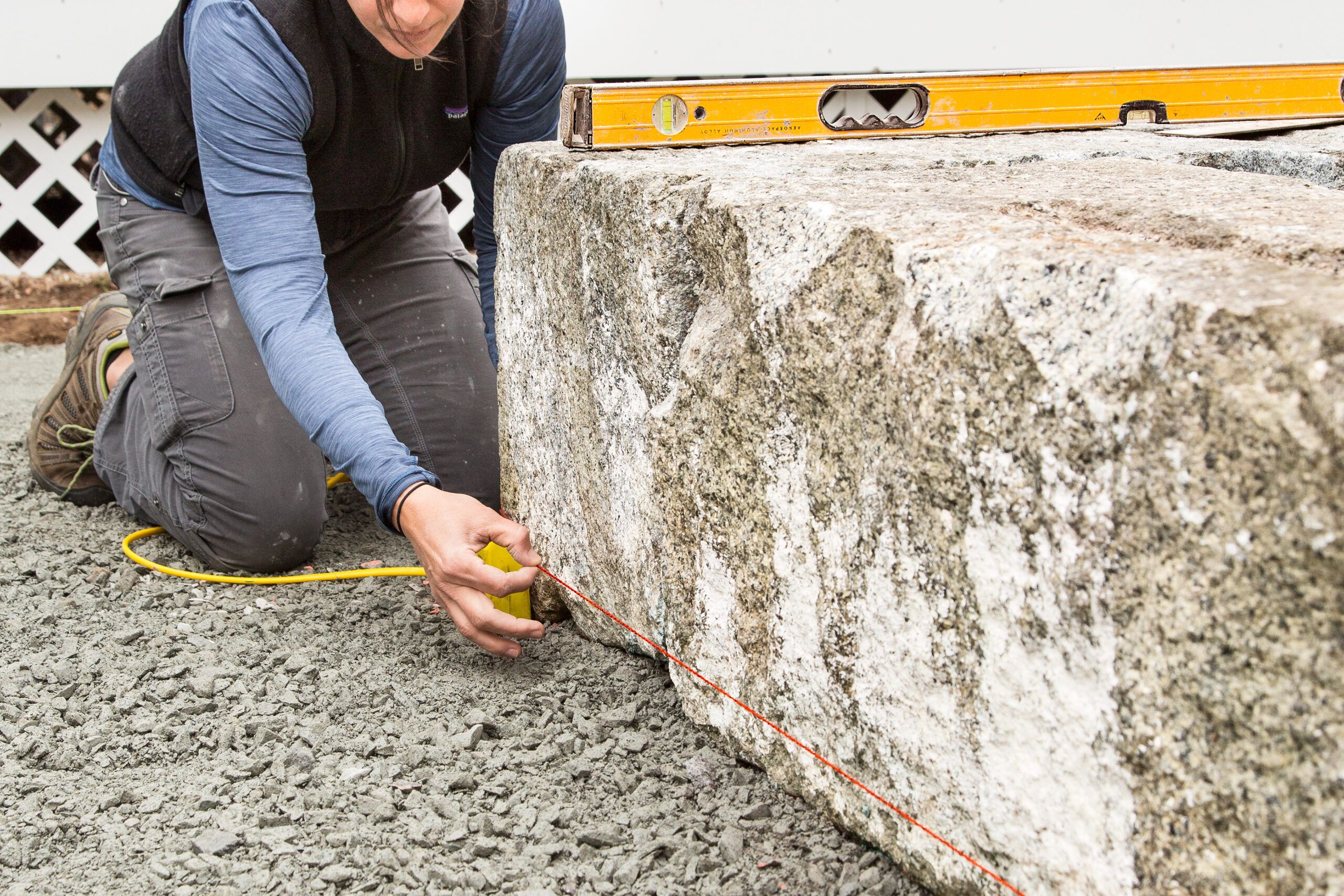
Snap a mason line across one side of the fire pit 2 inches above the compacted base, as shown. This line represents the finished height of the bluestone once the pavers are tamped in place.
Step 11: Compact stone dust
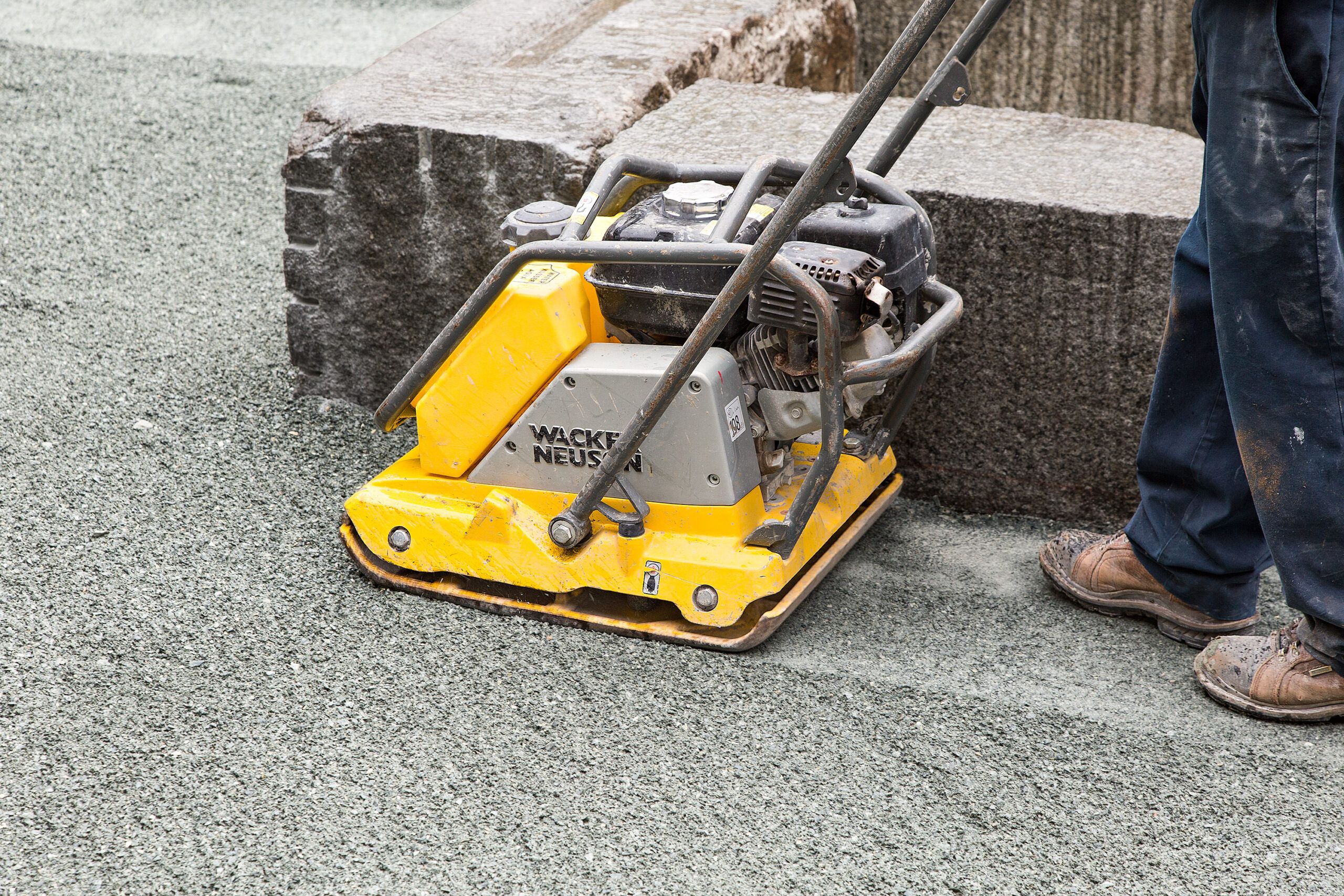
Add a 2- to 3-inch-thick layer of stone dust over the base and tamp it to about a ½ inch.
Step 12: Set the first stone
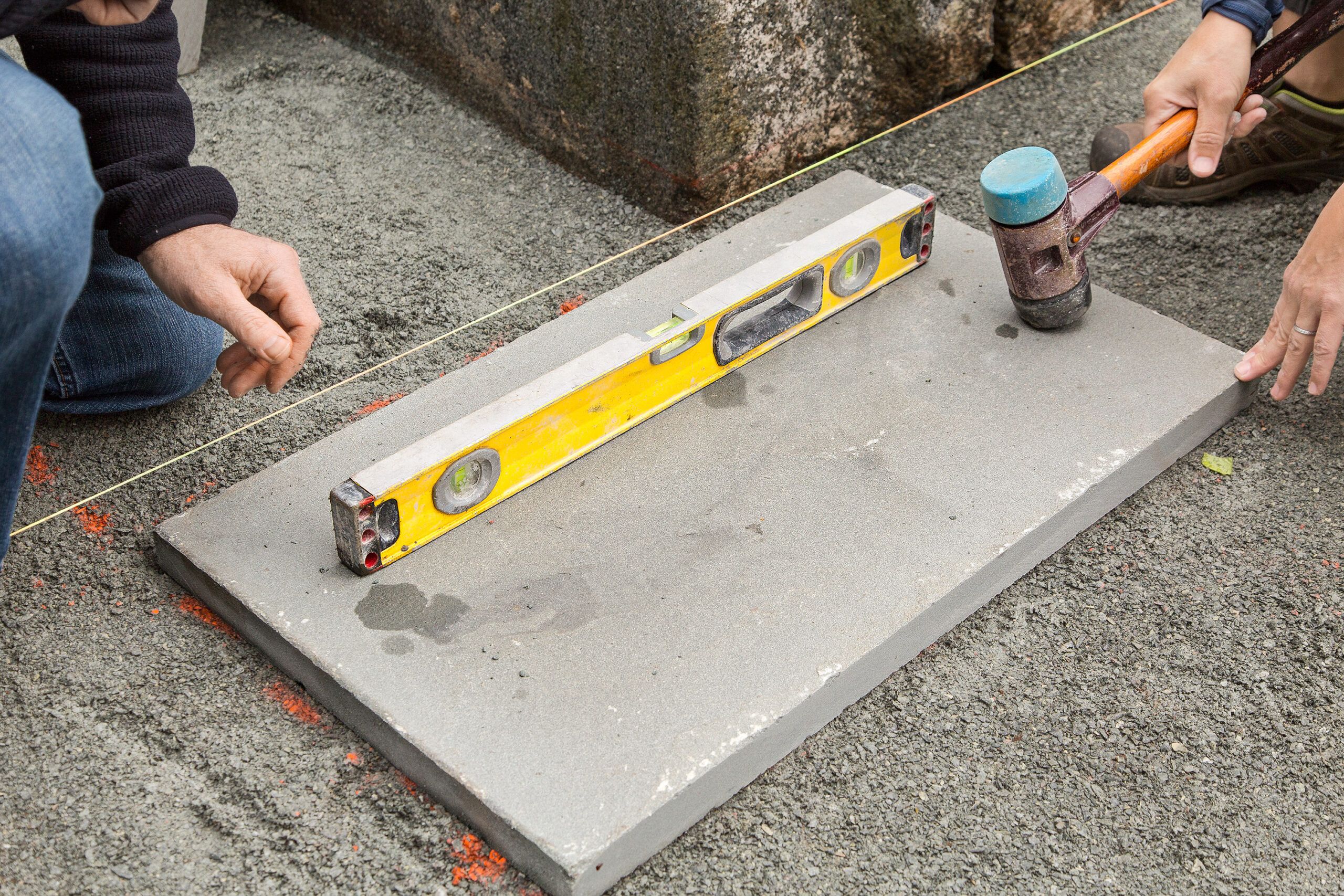
Work out the patio pattern on paper first. Then lay a 24-inch-long piece of bluestone about 3⁄8 inch away from the edge of the granite so it extends past the fire pit corner by about 18½ inches, leaving enough room for the second paver and the joint.
Make sure the paver is evenly spaced away from the mason line by the fire pit. Check the bluestone for level, accounting for the 1⁄4-inch pitch; tamp with a rubber mallet to set the stone.
Tip: Design the patio pattern on 1⁄4-inch graph paper. Draw the perimeter first, then add pavers to scale, repositioning as necessary for a random look. Try to keep joints less than 3 feet long.
Step 13: Turn the corner
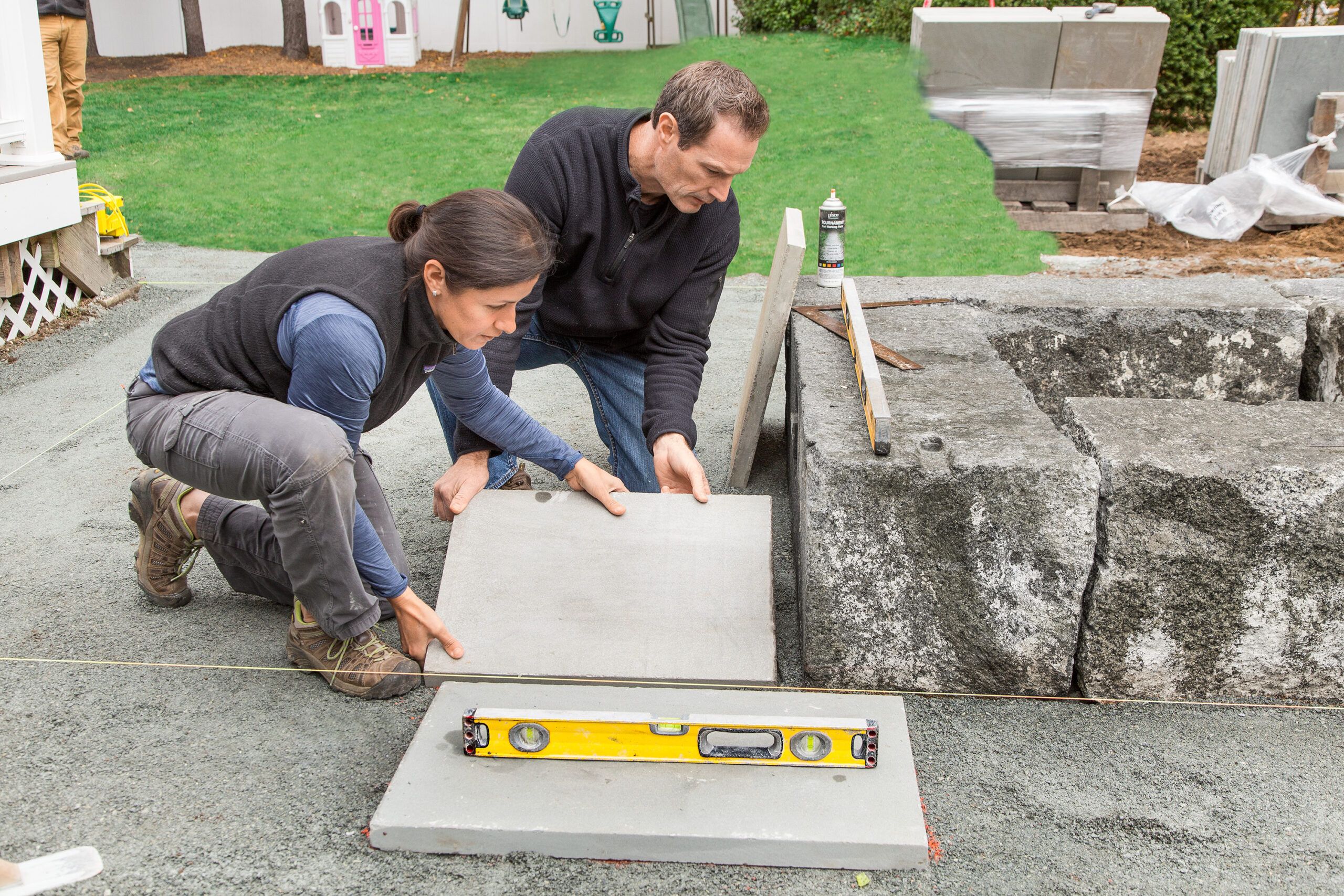
Place an 18-by-18-inch paver next to the first one, leaving about a 3⁄8-inch-wide joint between the stones. Check that it’s level, then set it with a mallet.
Step 14: Finish the pattern

Continue building out the bluestone pattern, mixing 24- and 12-inch wide pavers together while keeping the outside edges of the patio straight. Stagger the joints between neighboring pavers.
Step 15: Fill the joints
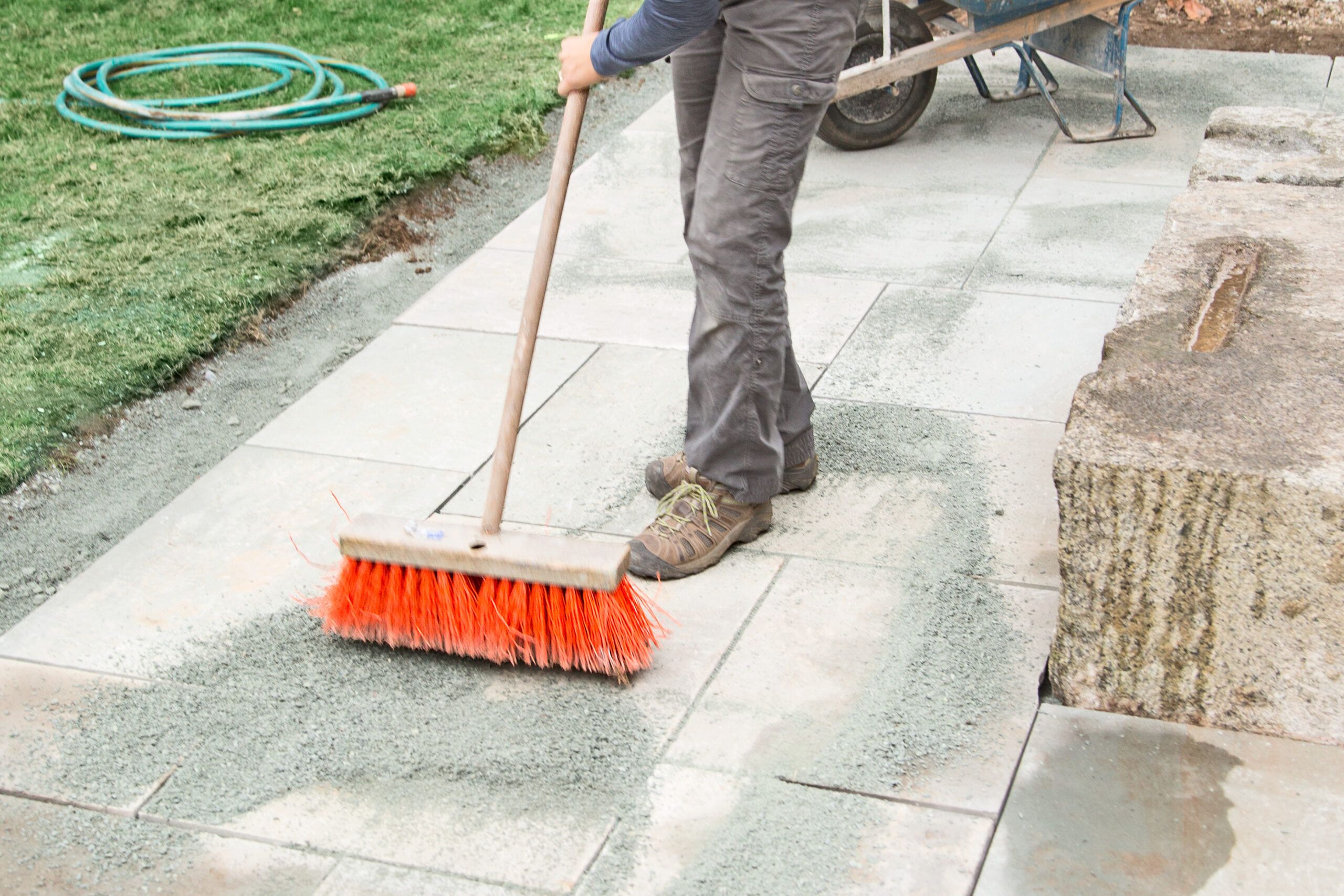
Spread stone dust over the finished patio, and brush it into the joints with a broom. Repeat until the joints are full, then mist the patio down with water to settle the joints. Add topsoil around the edges of the patio to cover any exposed base material.
Resources
- Bluestone pavers: Landscape Depot
- Salvaged granite blocks: Landscape Depot
Materials
- Garden hose
- Wax pencil
- Dust mask
- Safety goggles
- Hearing protection
- Push broom
- Tape measure
- Shovel
- Rake
Tools
 Hammer
Hammer Plate compactor
Plate compactor Mini excavator with lifter
Mini excavator with lifter

